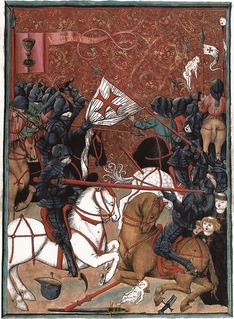 W
WJan Hus, sometimes anglicized as John Hus or John Huss, and referred to in historical texts as Iohannes Hus or Johannes Huss, was a Czech theologian and philosopher who became a Church reformer and the inspiration of Hussitism, a key predecessor to Protestantism and a seminal figure in the Bohemian Reformation. After John Wycliffe, the theorist of ecclesiastical reform, Hus is considered the second Church reformer, as he lived before Luther, Calvin and Zwingli. His teachings had a strong influence on the states of Western Europe, most immediately in the approval of a reformed Bohemian religious denomination and, over a century later, on Martin Luther. Hus was a master, dean, and rector at the Charles University in Prague.
 W
W1840 Hus is a stony Koronis asteroid from the outer regions of the asteroid belt, approximately 12.5 kilometers in diameter. It was discovered on 26 October 1971, by Czech astronomer Luboš Kohoutek at the Bergedorf Observatory in Hamburg, Germany. The S-type asteroid has a rotation period of 4.8 hours and is likely elongated in shape. It was later named after 15th-century theologian Jan Hus.
 W
WThe Bethlehem Chapel is a medieval religious building in the Old Town of Prague, Czech Republic, notable for its connection with the origins of the Bohemian Reformation, especially with the Czech reformer Jan Hus.
 W
WThe Hussites were a Czech Proto-Protestant Christian movement that followed the teachings of reformer Jan Hus, who became the best known representative of the Bohemian Reformation.
 W
WThe Jan Hus Educational Foundation was founded in May 1980 by a group of British philosophers at the University of Oxford. The group operated an underground education network in Czechoslovakia, then under Communist Party rule, running seminars in philosophy, smuggling in books, and arranging for Western academics to give lectures.
 W
WJan Hus Presbyterian Church is a Christian congregation associated with the Presbyterian Church USA. It is the oldest Czech Presbyterian congregation in the US, having been founded in 1877, and the church building was opened in 1888.
 W
WAltar Wings of Roudníky are two surviving wings of late Gothic retable, which probably originated in one of Prague's contemporary workshops for village (Utraquist) parish church. The altar wings exhibited at the Hussite Museum in Tabor have the status of a national cultural monument. These are the two sides painted plates accrued before 1486. The wings were cut back and secondarily coated with baroque marbling, making reconversion survived the 17th and 18th centuries, since the inside of the right wing is the oldest depiction of the burning of Jan Hus depicted in the Czech Gothic panel painting. It is believed to be a fragment of an altarpiece, which has not survived. The anonymous painter portrayed "Crucifixion" and "The Last Supper", possibly in monstrance with the body of the Lord. Due to the fact that both wing plates are shown, it is assumed that the patron was Jakoubek of Vřesovice, a Hussite captain, from Roudníky and his son John.
 W
WDe orthographia bohemica is a Latin work published between 1406 and 1412. It is attributed to Charles University rector and reformer Jan Hus. The book codified the Czech language's modern spelling and orthography and had decisive impact on the orthography of a number of other European languages.